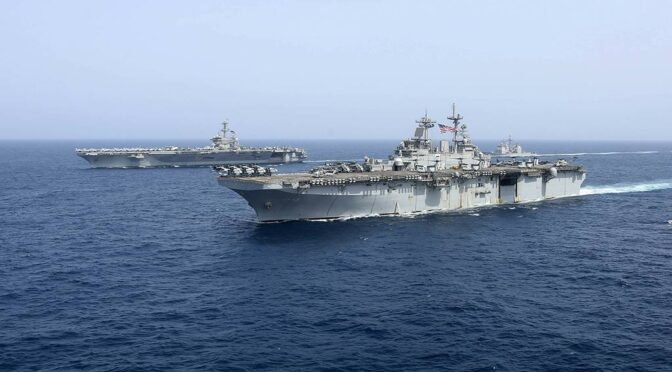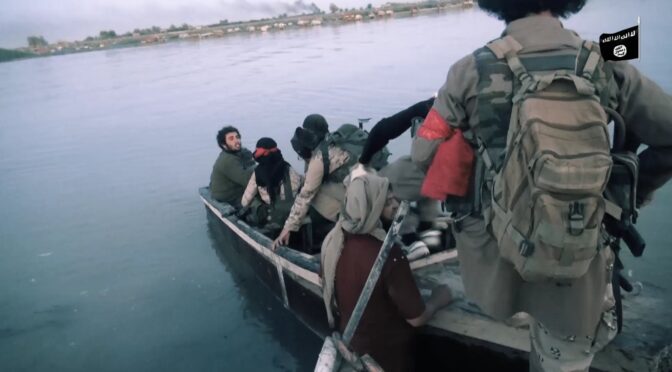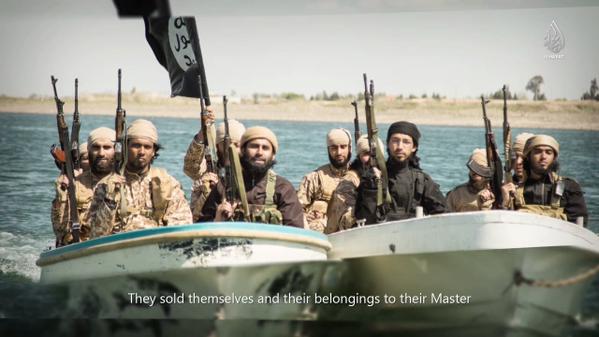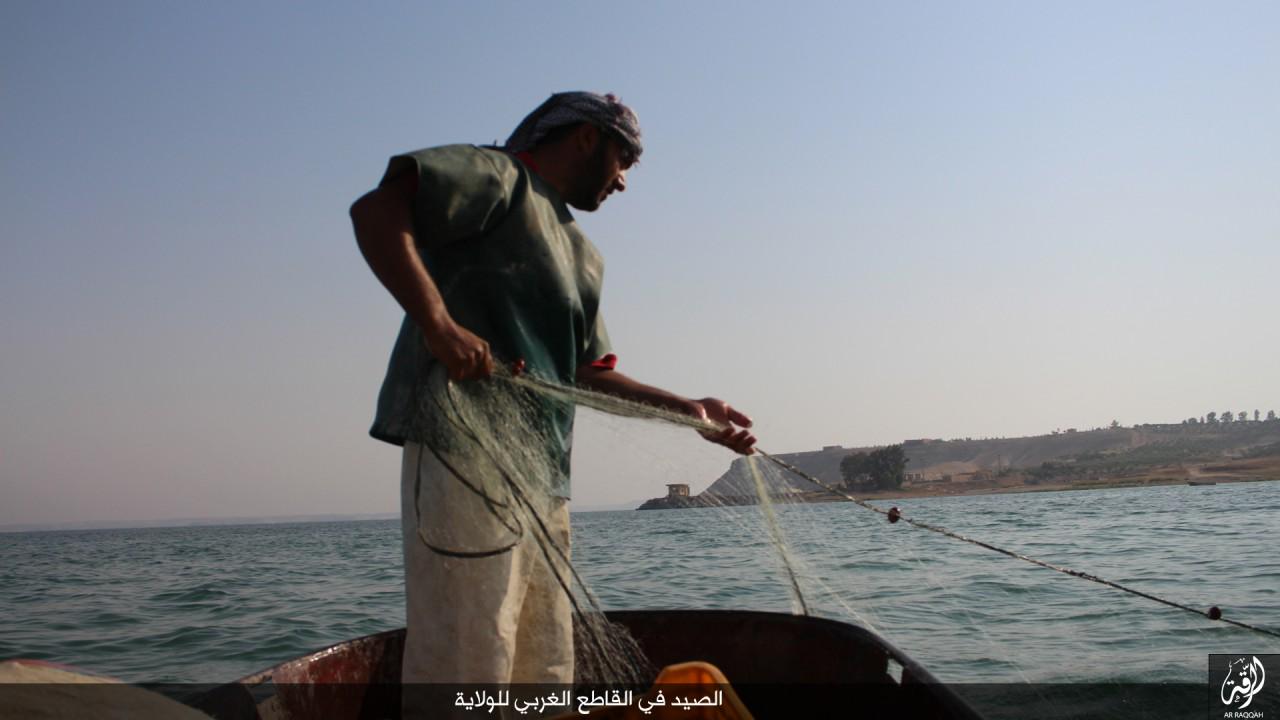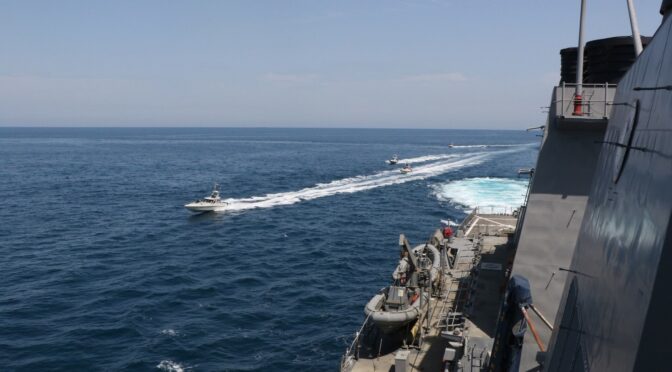By Cameron Sothern
The volume of oil that flows through the Strait of Hormuz gives it geostrategic importance. According to the U.S. Energy Information Administration, “In 2018, its daily oil flow averaged 21 million barrels per day (b/d), or the equivalent of about 21% of global petroleum liquids consumption.”1 If freedom of navigation through the Strait of Hormuz were hampered, an energy crisis would ensue. Maritime insecurities anywhere are a threat to the circulation of global trade. In the Persian Gulf and its adjacent seas, these insecurities mostly originate from Iran and its proxy forces, such as the Houthis in Yemen. “By controlling the Strait of Hormuz and placing forces along the Bab el-Mandeb in Yemen, Iran can contest energy flows to US allies as well as to China.”2 This article identifies Iranian maritime threats and proposes a course of action for the U.S. Navy to continue and improve upon its efforts in the region to deter them.
Iranian Maritime Capabilities
The Islamic Republic is well suited to draw on the rich millennial heritage of Iranian society and culture and the significant heritage of the Islamic Revolution, particularly its indigenously derived and sustained participatory model of governance. Iran can use such strengths to help realize the deeply cherished national aspirations of the Iranian people, including the achievement of long-term development and regional ascendance commensurate with the country’s capacities and stature. —Iran Foreign Minister Mohammad Javad Zarif3
It is important to note that while the Islamic Republic of Iran is a relatively young state, its heritage stems from the legacy of the Persian Empire, and there are overtones of restoring a similar sense of greatness. Iran’s current strategic goal is to create a regionally hegemonic state. The goal is divided into four pillars: continuity of clerical rule, addressing internal and external threats, stabilizing regional influence, and attaining economic prosperity.4 Iran’s maritime and naval capabilities play an important role in supporting its strategic goal, especially when employed in the “gray zone.”5 By operating in the gray zone, Iran can make incremental changes to the status quo, which currently favors the U.S.-led International Rules Based Order (IRBO). When the United States and its partners in the region attempt to counter Iranian actions, Iran can fall back to its area of access denial, let things cool off, and reinitiate incremental changes.
Within the Persian Gulf, the naval arm of the Islamic Revolutionary Gard Corps, the Islamic Revolutionary Guard Corps Navy (IRGCN), operates hundreds of small craft that are used in swarm tactics and special operations. The vessels are cheaper and faster than conventional military vessels, allowing them to respond quickly and in mass anywhere in the Persian Gulf or Strait of Hormuz. The IRGCN harasses military and commercial vessels. Their tactics involve surrounding the targeted vessel and cutting across its bow. The IRGCN has also diverted and detained certain foreign vessels in response to economic sanctions. Examples of aggressive IRGCN actions since 2019 include attacks on Norwegian, Japanese, Saudi Arabian, and Israeli vessels. The IRGCN vessels are often emboldened by ambitious regional commanders, acting without orders from the state or supreme leader.
If Iran were to attempt to control the Strait of Hormuz, it would rely heavily on the capabilities of the IRGCN. As stated above, Iran can move in and out of its area of access denial; but it also has the capacity to expand this area. In such a scenario, the IRGCN would likely lay naval mines and board or attack commercial vessels. Moreover, while not an exclusively maritime capability, Iran has shown an affinity for the use of unmanned aerial systems (UAS) to attack land-based infrastructure in the region. Regarding Iran, General McKenzie Jr. stated in the CENTCOM posture statement, “For the first time since the Korean War, we are operating without complete air superiority.”6 Iran has employed many of these tactics in the past without consequence, and the protentional for them to do so in a less limited manner could send shock waves through global markets.
Iran relies on two other maritime forces to support its state strategy. The Islamic Republic of Iran Navy (IRIN) is a traditional naval force comprised of surface ships and submarines. The IRIN operates in the Persian Gulf, Caspian Sea, Gulf of Oman, and beyond. The IRIN is an aging fleet and does not present a major security threat. It participates in counter piracy and escort operations in the Gulf of Aden and northern Indian Ocean; however, it is mostly employed by Iran as a diplomatic tool. The IRIN can train with Chinese and Russian naval forces, allowing Iran to project limited power outside of the region. The IRIN has also made port calls in Sri Lanka and China. For now, Iran’s maintenance of a green-water navy is more of a status and reputation builder than a threat to maritime security.
In addition to the IRIN, Iran maintains state control of the Islamic Republic of Iran Shipping Line (IRISL). Iran manufactures much of its own military equipment and relies heavily on the IRISL to export it to Iranian proxies and state actors, often in violation of international sanctions. “Iran’s biggest customers include Syria, Hizballah in Lebanon, and Iraqi Shia militias, but Iran has also provided weapons to the Houthis in Yemen, Palestinian groups, and the Taliban in Afghanistan… other state customers of Iranian military equipment have included Iraq and Sudan…”7 The military equipment includes small arms, ammunition, artillery systems, armored vehicles, equipment for unmanned explosive boats, and communications equipment. These exports benefit the Iranian economy; expand Iranian influence and power; and, when used by proxy forces, support Iranian military objectives.
Breaking Down Iran’s Maritime Threats
Iran’s geographic position and maritime capabilities have allowed the state to continue its pursuit of altering the status quo.8 Recurringly, Iran has acted aggressively to create short-term tension, while retaining the ability to prolong and diversify its actions as a means to avoid escalation to war. It is commonly agreed that Iran’s desire to avoid direct warfare is a result of its experience in the 1980 Iran-Iraq War, in which both sides of the conflict lost tens of thousands.9 In this conflict, Iran learned the necessity of a passive defense. Passive defense tactics focus on denial and deception to mitigate vulnerabilities and increase survivability, ensuring a strong retaliation. “Examples of this [denial and deception] include, using camouflage and concealment, hiding, and dispersing forces, building underground facilities, and developing highly mobile units.”10
These tactics contribute to Iran’s deterrent strategy, which seeks to highlight how long and costly a direct conflict with Iran would be. The denial and deception aspects of passive defense are also used by the IRGCN. “The IRGCN is the primary operator of Iran’s hundreds of fast attack craft (FAC) and fast inshore attack craft (FIAC). These platforms have been the mainstay of the IRGCN since its inception in the 1980s, although the Iranian FAC/FIAC inventory has grown significantly in terms of size and lethality since that time.”11 These vessels are highly mobile and allow for the dispersion of equipment and personnel along Iran’s coastline in the Persian Gulf, which would help mitigate Iran’s losses should they endure a strike.
Iran’s maritime threats closely align with contemporary academic knowledge regarding hybridized maritime threats. The four necessary components of hybridized aggression in the maritime domain are: a state with major power, deniable but clear orchestration on behalf of the state, illegal action, and control over levels of aggression to match responses.12 Iran has performed elements of hybridized maritime aggression in the past, especially through its proxies. In early March 2021, Houthi forces in Yemen used over a dozen drones to attack the Ras Tanura oil facility in Saudi Arabia.13 “The Houthis are increasing their missile salvos against Saudi Arabia because they have no fear of shortages. As the Biden administration and the UN have pointed out, the rebels can draw on covert shipments of Iranian-supplied drone engines, ballistic missile motors, and electronics.”14 The attack on the oil port shows Iran’s ability to direct proxy attacks on maritime infrastructure.
Iran also uses state forces to perform hybridized maritime aggression. While the most blatant example is the use of the IRGCN to place limpet mines on commercial vessels, the conduct of IRGCN vessels at sea also qualifies. In late April of 2021, several Iranian FIAC quickly approached the USS Firebolt and the USCGC Baranof, “To an unnecessarily close range with unknown intent, including a closest point of 68 yards.”15 The article continued, “The U.S. crews issued multiple warnings via bridge-to-bridge radio and loud-hailer devices, but the IRGCN vessels continued their close-range maneuvers.” Again, in May 2021, thirteen Iranian FAC rapidly approached U.S. Navy and U.S. Coast Guard vessels that were transiting the Strait of Hormuz. After failing to respond to radio and horn signals, and coming within 300 yards of U.S. vessels, USCGC Maui fired warning shots towards the Iranian FAC.16
The conduct of these vessels was hazardous and violated the 1972 Convention on the International Regulations for Preventing Collisions at Sea, which establishes standard practices for vessels maneuvering in proximity to one another. The Iranian FAC/FIAC acted without regard for proper communication, signaling, or the safety of life at sea. Although none of the incidents resulted in a collision or loss of life, the risk was significant, as was the potential to escalate tensions between the United States and Iran to dangerous levels. The variety of Iran’s maritime aggression, from proxy attacks on oil ports to dangerous maneuvering at sea, highlights Iran’s ability to use varying levels of maritime tactics and fulfills the requirements to categorize Iran as a hybrid actor in the maritime domain.
A Course of Action for the U.S. Navy
Several actors and ongoing initiatives are working towards greater security in the Persian Gulf. These include U.S. Central Command (CENTCOM) and its naval element, U.S. Naval Forces Central Command, which oversees the operations of U.S. 5th Fleet and Combined Maritime Forces (CMF). Comprising 34 member states, “CMF’s main focus areas are counter-narcotics, counter-smuggling, suppressing piracy, encouraging regional cooperation, and engaging with regional and other partners to strengthen relevant capabilities in order to improve overall security and stability, and promoting a safe maritime environment free from illicit non-state actors.”17 Additionally, the International Maritime Security Construct (IMSC) was formed in July 2019 to provide updated information for merchant vessels that transit the Strait of Hormuz and Persian Gulf.
Many states benefit from the security provided by these initiatives and contribute to them, but the U.S. Navy plays an especially important leadership role. In addition to the frequent presence of a U.S. carrier strike group and independently deployed destroyers within and outside of the Persian Gulf, the latter of which often support CMF operations, the United States has led the multinational Combined Task Force 152 (CTF 152), one of three task forces under the CMF, 10 times. CTF 152 oversees maritime security operations within the Persian Gulf. Other states that have commanded CTF 152 have done so four times or less.18 Due to its large capacity and leadership experience, there are several things that the U.S. Navy should do, or oversee, to further increase Persian Gulf security.
The U.S. Navy should continue to increase its mine countermeasure and air defense capabilities. Anti-mine capabilities will create higher assurances of safe navigation and further mitigate the threat of naval mines. It is already part of CENTCOM’s effort to increase the number of Avenger-class mine countermeasure ships and Sea Dragon helicopters to protect the navigation of vessels in the Persian Gulf.19
The threat of drones, rockets, and missiles to vessels, port facilities, and other key points. The U.S. Navy should work with CENTCOM and regional states to solidify potential targets and work collaboratively on air defense. The March 2021 drone attack on Ras Tanura oil facility was thwarted by Saudi Arabia, who received early warning from U.S. systems and a U.S. airborne early warning aircraft.20 This has also been identified by CENTCOM as a significant threat and area for further regional development.
An additional approach to limiting Iranian proxy groups is the continuation of patrols by CTF 150 and CTF 152, which patrol within and outside of the Persian Gulf, respectively. These patrols often intercept weapons and narcotics shipments, although they are not explicitly targeting shipments from Iran. In May 2021, the U.S. Navy and U.S. Coast Guard intercepted, “…dozens of advanced Russian-made anti-tank guided missiles, thousands of Chinese Type 56 assault rifles, and hundreds of PKM machine guns, sniper rifles and rocket-propelled grenades launchers.”21 Participation in CMF is not mandatory, but the United States could encourage additional states to participate and help manage their contributions.
The U.S. Navy should continue to work with other naval forces and regional states to quantify Iranian capabilities. Quantifying Iran’s capabilities will help decision makers in the U.S. Navy, U.S. government, and U.S. partners to create more accurate risk assessments in order to dispatch the most appropriate resources to mitigate or respond to threats.
There are diverging legal perspectives between the United States and Iran regarding passage through the Strait of Hormuz. The U.S. Navy should continue to exercise its right to transit passage through the Strait of Hormuz. Iran recognizes its own maritime laws, which incorporate a modified version of innocent passage through the Strait of Hormuz.22 The United States recognizes the Strait of Hormuz as an international strait and does not recognize the strait as territorial waters of Iran. Therefore, the United States makes its passages according to transit passage, which is the movement of a vessel from one part of the high seas/Exclusive Economic Zone (EEZ) to another part of the high seas/EEZ. In transit passage, U.S. vessels and aircraft maintain normal operations, such as flying in a defensive formation.
Conclusion
In combination, these actions could further mitigate and deter Iranian maritime threats while supporting the IRBO. As a highly capable and influential naval force, the U.S. Navy should continue to strongly advocate for and lead maritime security efforts in the Persian Gulf and its adjacent seas. An increased naval approach to the region will provide the United States flexibility and mobility in addressing challenges. While Iranian maritime threats present an immediate challenge in the Persian Gulf, they also prompt larger questions about how the U.S. Navy can better address gray zone operations and hybrid aggression in the maritime domain. Considering the economic and military strength of the United States relative to Iran, the United States should focus on Iran to gain insights into effective strategies that could apply to similar challenges elsewhere, such as those posed by Russia in the Black Sea and China in the South China Sea.
Cameron Sothern is a 2021 graduate of the California State University Maritime Academy. He holds a BA in Global Studies and Maritime Affairs summa cum laude and has been accept to attend the U.S. Navy’s Officer Candidate School in November.
References
[1] Barden, J. (2019, June). The Strait of Hormuz is the world’s most important oil transit chokepoint. U.S. Energy Information Administration. https://www.eia.gov/todayinenergy/detail.php?id=39932#
[2] Clark, B., Walton, T. A., & Cropsey, S. (2020). American Sea Power at a Crossroads: A Plan to Restore the US Navy’s Maritime Advantage. Hudson Institute, 72.
[3] Zarif, M. J. (2014). What Iran Really Wants: Iranian Foreign Policy in the Rouhani Era. Foreign Affairs, 93(3), 49–59. https://www-jstor-org.ezproxy.csum.edu/stable/24483405?seq=5#metadata_info_tab_contents
[4, 7, 11] Defense Intelligence Agency. (2019). Iran military power: Ensuring regime survival and securing regional dominance. Defense Intelligence Agency.
[5] Mazaar, M.J. (2015). “Mastering the Gray Zone: Understanding a Changing Era of Conflict.” Strategic Studies Institute and U.S. War College Press, p.1–7. https://publications.armywarcollege.edu/pubs/2372.pdf
[6, 19] General McKenzie Jr., K. (2021, April). POSTURE STATEMENT OF GENERAL KENNETH F. MCKENZIE, JR., COMMANDER, UNITED STATES CENTRAL COMMAND BEFORE THE SENATE ARMED SERVICES COMMITTEE. U.S. Central Command. https://www.centcom.mil/ABOUT-US/POSTURE-STATEMENT/
[8] Eisensdadt, M. (2020-b, January). Operating in the Gray Zone: Countering Iran’s Asymmetric Way of War. The Washington Institute. https://www.washingtoninstitute.org/policy-analysis/operating-gray-zone-countering-irans-asymmetric-way-war
[9] Kurzman, C. (2013, October). Death Tolls of the Iran-Iraq War – Charles Kurzman. Death Tolls of the Iran-Iraq War. https://kurzman.unc.edu/death-tolls-of-the-iran-iraq-war/
[10] Office of Naval Intelligence. (2017). Iranian Naval Forces: A Tale of Two Navies ((DOPSR Case 17-S-0836)). https://www.oni.navy.mil/Portals/12/Intel%20agencies/iran/Iran%20022217SP.pdf
[12] Ralby, I. (2017). Examining Hybrid Maritime Threats. Combined Joint Operations from the Sea Centre of Excellence: Cutting the Bow Wave, 13–17. http://www.cjoscoe.org/infosite/wp-content/uploads/2017/04/CJOS_COE_Cutting_the_Bow_Wave_2017_Final_compressed_v2.pdf
[13-14, 20] Knights, M. (2021, March). Continued Houthi Strikes Threaten Saudi Oil and the Global Economic Recovery. The Washington Institute. https://www.washingtoninstitute.org/policy-analysis/continued-houthi-strikes-threaten-saudi-oil-and-global-economic-recovery
[15] U.S. Navy Office of Information. (2021, April). IRGCN Interaction with U.S. Naval Vessels in the North Arabian Gulf. United States Navy. https://www.navy.mil/Press-Office/Press-Releases/display-pressreleases/Article/2587098/irgcn-interaction-with-us-naval-vessels-in-the-north-arabian-gulf/
[16] U.S. 5th Fleet Public Affairs. (2021-a, May). Unsafe and Unprofessional Interaction with IRGCN FIAC in Strait of Hormuz. U.S. Naval Forces Central Command. https://www.cusnc.navy.mil/Media/News/Display/Article/2602006/unsafe-and-unprofessional-interaction-with-irgcn-fiac-in-strait-of-hormuz/
[17-18] Combined Maritime Forces. (2021, May). CTF 152: Gulf Maritime Security. CTF 152: GULF MARITIME SECURITY. https://combinedmaritimeforces.com/ctf-152-gulf-security-cooperation/
[21] U.S. 5th Fleet Public Affairs. (2021-b, May). USS Monterey Seizes Illicit Weapons in the North Arabian Sea. U.S. Naval Forces Central Command. https://www.cusnc.navy.mil/Media/News/Display/Article/2600829/uss-monterey-seizes-illicit-weapons-in-the-north-arabian-sea/
[22] Convention on the Law of the Sea, Dec. 10, 1982, 1833 U.N.T.S. 433. https://treaties.un.org/doc/Publication/UNTS/Volume%201833/volume-1833-A-31363-English.pdf
Featured image: April 2020 – Iranian Islamic Revolutionary Guard Corps Navy (IRGCN) vessels approach the guided-missile destroyer USS Paul Hamilton (DDG 60) at close range while conducting joint interoperability operations in support of maritime security in the U.S. 5th Fleet area of responsibility. (Credit: U.S. Navy)

